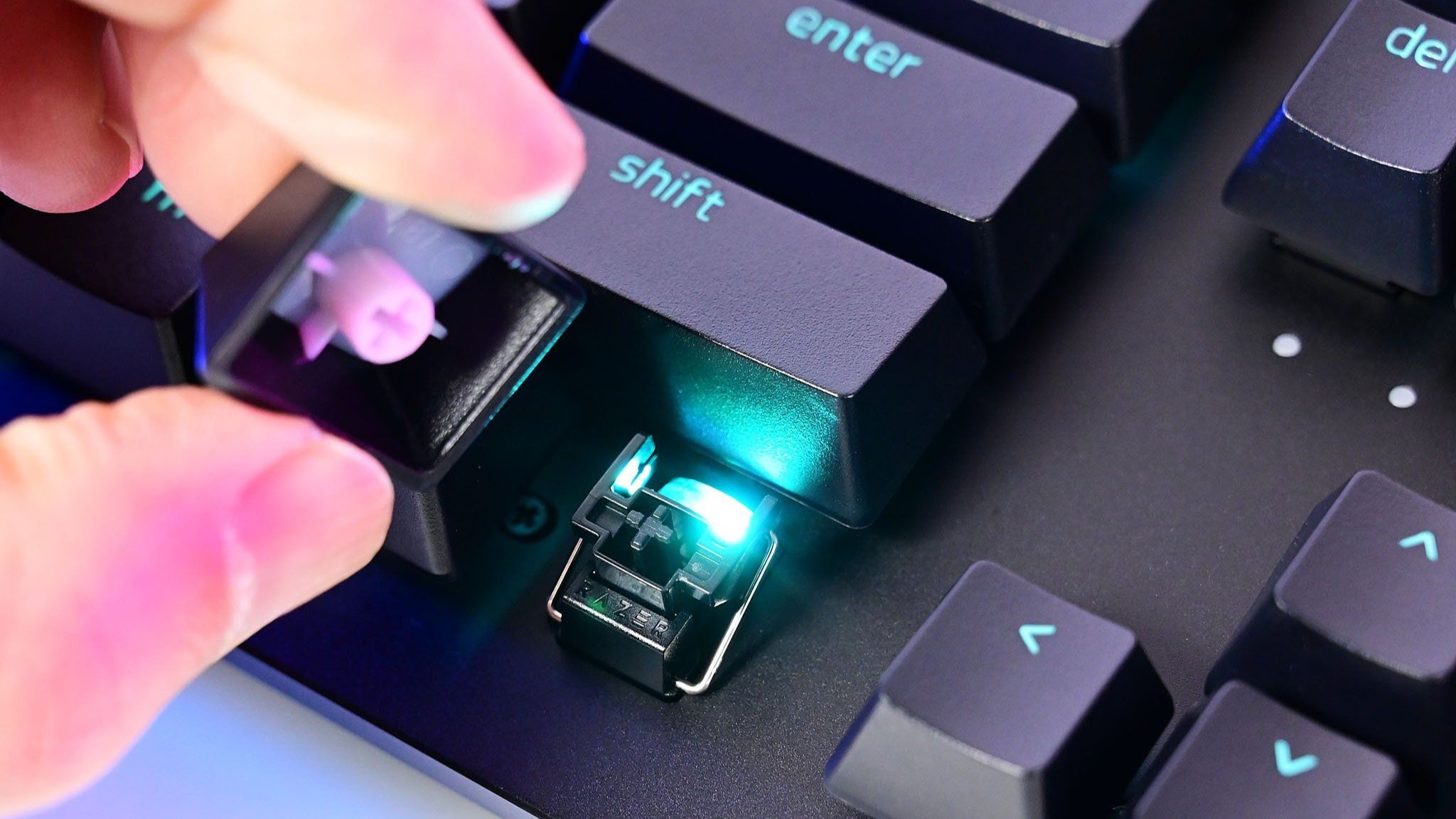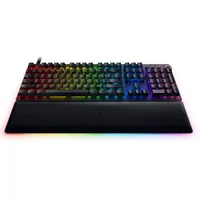The Razer Huntsman V2 Analog gaming keyboard just fixed its biggest flaw three years after launch
An already excellent gaming keyboard from Razer is now much more affordable.
Choosing a gaming keyboard is a very personal experience. Every gamer has a different library of favorites and varying play styles that require different features. So when a keyboard comes along that provides actuation customization, it's worth a look. The Razer Huntsman V2 Analog turned our heads back in 2021 when it launched, and it drew our attention today with a massive discount.
Right now, you can get a Razer Huntsman V2 Analog for $119.99. That's 52% off its retail and the discount fixes one of the few weaknesses of Razer's impressive gaming keyboard.
Razer Huntsman V2 Analog | was $249.99 now $119.99 at Amazon
This gaming keyboard has adjustable keys that let you set the actuation on a per-key basis. That means you can set your WASD keys to have shorter travel. The keyboard also has a full number pad, RGB lighting, and a control wheel.
Fixing the Razer Huntsman V2 Analog
One of the only flaws of the Razer Huntsman V2 Analog was its launch price. Calling it a flaw may even be too harsh. Generally, you don't see per-key actuation customization in affordable keyboards, so the Huntsman V2 Analog delivers solid value at $249.99. But delivering great value or a feature set that justifies a price doesn't make something affordable. With today's 52% discount, the Razer Huntsman V2 Analog dips down in price to compete in an entirely different bracket.
Razer Huntsman V2 vs Razer Huntsman V2 Analog

While the Razer Huntsman V2 Analog and Razer Huntsman V2 have similar names and designs, there are some key differences, quite literally. Most notably, the Huntsman V2 Analog has analog optical switches while the Huntsman V2 non-optical linear switches.
The Huntsman V2 Analog's switches have liner motion and support actuation, allowing you to granularly adjust the actuation point. The keys range from 1.5mm to 3.6mm. For example, you could set your WASD to have their actuation point as 1.5mm but have other keys stick with their standard settings. Per-key adjustments are supported, so there are essentially limitless possibilities.
In addition to adjustable actuation, the Huntsman V2 Analog supports dual-step actuation, which is handy since you can set two different functions to a single key (with each function responding to a different level of actuation).
The keycaps on the Huntsman V2 Analog are Doubleshot PBT, which is more durable than ABS plastic used on some other keyboards.
The Huntsman V2 Analog's wrist rest attaches to the rest of the keyboard, which is a bit sturdier and also allows for the wrist rest to have an RGB light strip. The non-analog Huntsman V2 has a magnetic wrist rest as well but lacks a notch, so it can move a bit.
The following excerpt from our Razer Huntsman V2 Analog review shows how much a discount on the keyboard overcomes one of its few flaws:
"Is this now Razer's best keyboard? Absolutely. It's also the most expensive, and that's really the only thing that should put you off. It's a lot of money to drop on a keyboard, even one this good.
If the price doesn't put you off, though, this is a phenomenal buy, especially if you're already invested in Razer hardware.
The star of the show is undoubtedly the new analog optical switches. Whether you like linear switches, quiet switches, fast actuation or longer actuation, this keyboard can meet your needs. It ticks so many different boxes for a keyboard it's almost ridiculous."
That review was published almost three years ago, so of course Razer has other keyboards that compete for the top spot. But Richard Devine, who reviewed the Huntsman V2 Analog in 2021, still uses the gaming keyboard to this day.
If you're looking for something newer, make sure to check out the Razer Huntsman V3 Pro, which launched late last year.
All the latest news, reviews, and guides for Windows and Xbox diehards.

Sean Endicott is a news writer and apps editor for Windows Central with 11+ years of experience. A Nottingham Trent journalism graduate, Sean has covered the industry’s arc from the Lumia era to the launch of Windows 11 and generative AI. Having started at Thrifter, he uses his expertise in price tracking to help readers find genuine hardware value.
Beyond tech news, Sean is a UK sports media pioneer. In 2017, he became one of the first to stream via smartphone and is an expert in AP Capture systems. A tech-forward coach, he was named 2024 BAFA Youth Coach of the Year. He is focused on using technology—from AI to Clipchamp—to gain a practical edge.

